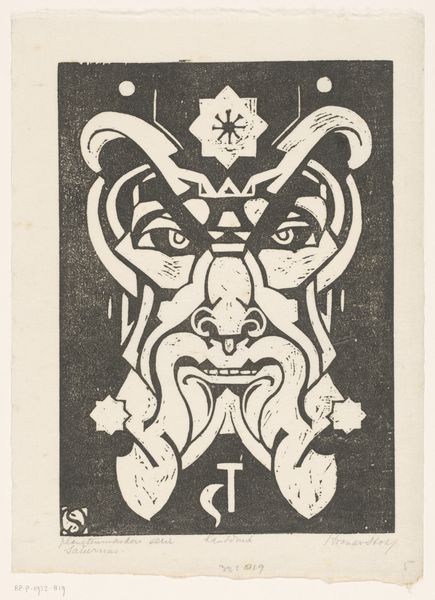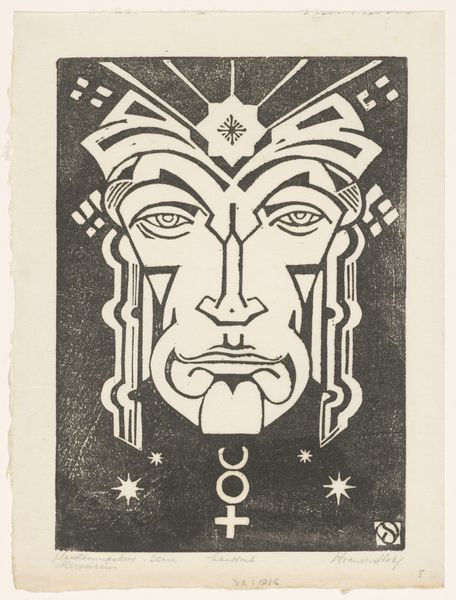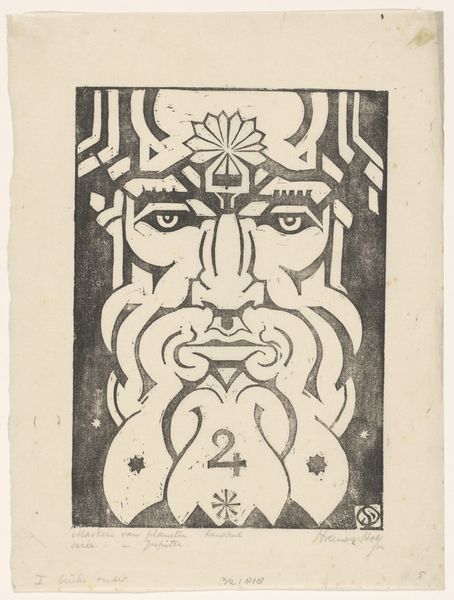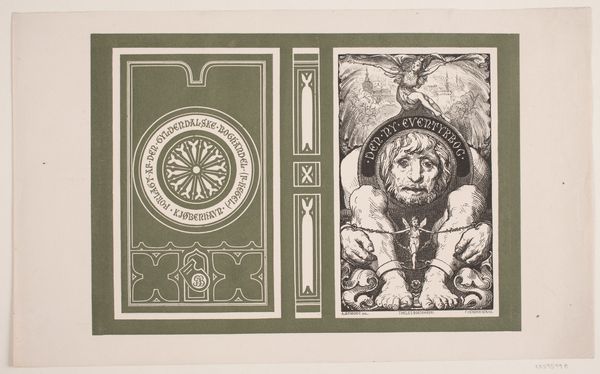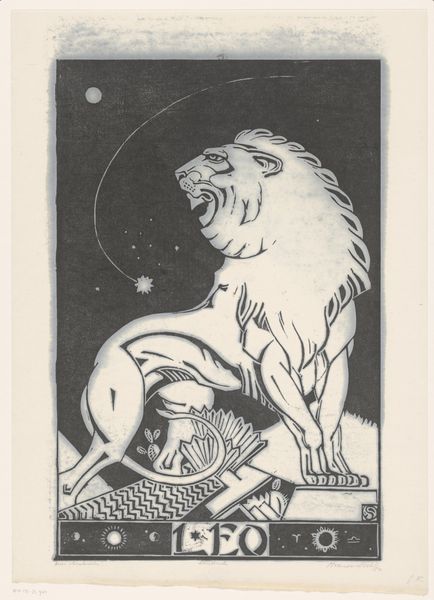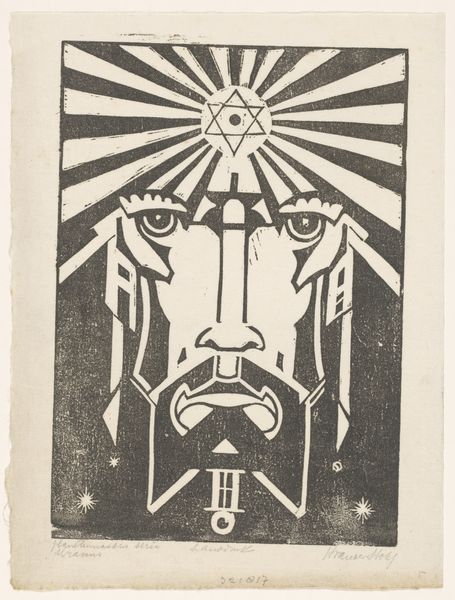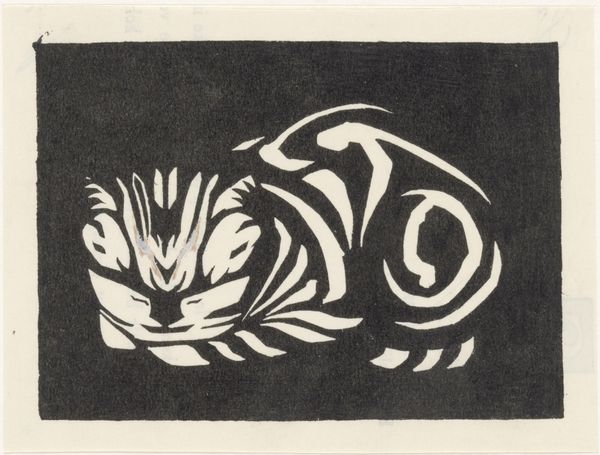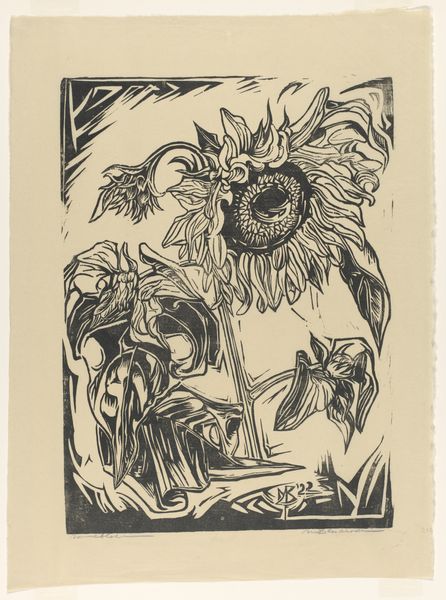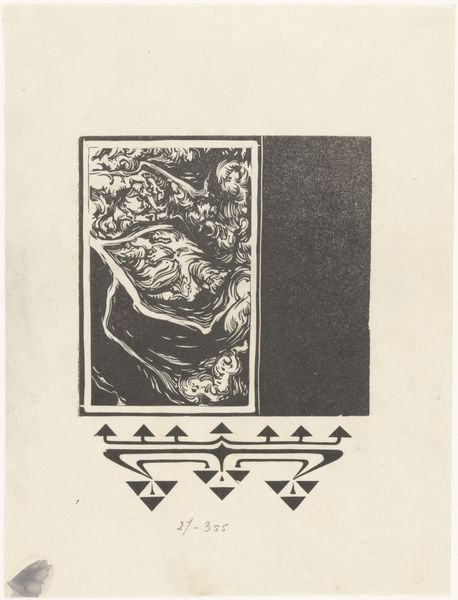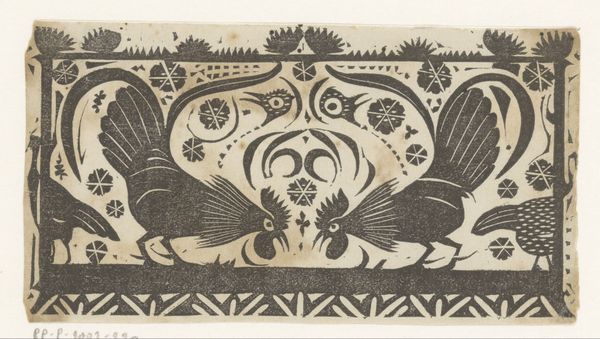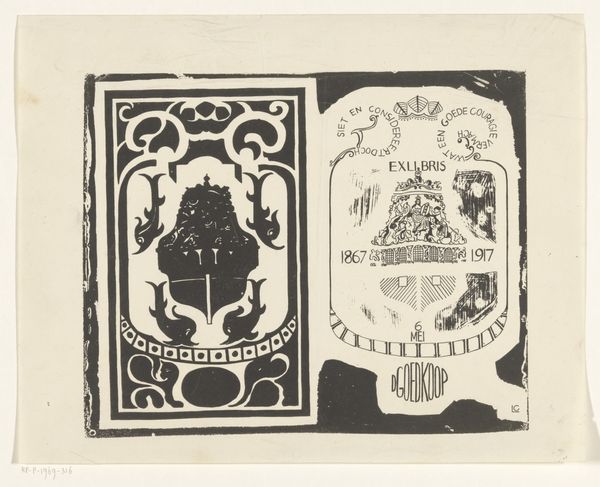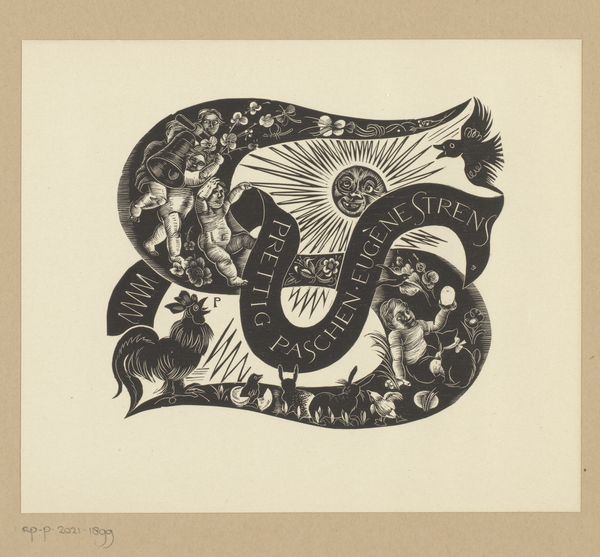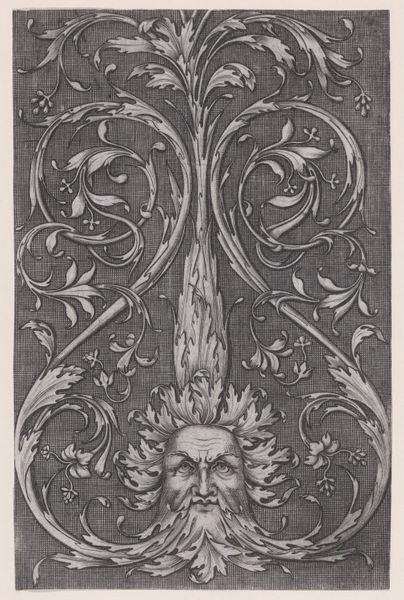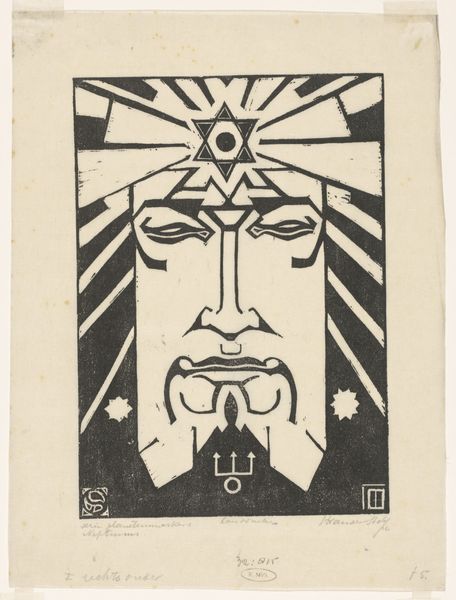
print, engraving
#
portrait
# print
#
figuration
#
form
#
geometric
#
line
#
symbolism
#
engraving
Dimensions: height 187 mm, width 249 mm
Copyright: Rijks Museum: Open Domain
Editor: So, this is "Head of a Lion" by Bernard Willem Wierink, made sometime between 1918 and 1919. It's a print, an engraving actually, and it strikes me as both powerful and symbolic. What do you see in this piece? Curator: I see a potent symbol of power, but one that’s also been carefully deconstructed. This lion head isn't simply a regal portrait; it’s framed within a complex geometric composition that seems to both celebrate and question ideas around identity, race and nationhood which were particularly potent after World War I. How does this piece speak to you in relation to, say, societal structures that enforce hierarchies? Editor: That's a really interesting take. I was so focused on the animal itself that I missed the possible socio-political undercurrents. The geometric shapes now appear as restrictive frameworks...almost like a cage. Curator: Exactly. The period of its creation is critical. Post-war Europe was wrestling with disillusionment and shifting power dynamics. Wierink seems to use the lion, traditionally a symbol of authority and strength, and places it within an environment that reflects that fragmentation and uncertainty. Consider how the stars, almost randomly placed, contrast with the defined lines of the lion's mane and face. Does that juxtaposition suggest something about chaos versus order? Editor: I think so. The stars feel almost like an encroaching chaos on the imposed order of the lion image, suggesting a breakdown of traditional structures. Curator: And it also opens up questions about the imposed ideas of "the other," in what terms were individuals considered outside social power? Were people depicted as animalistic for dehumanization? Editor: So the artwork questions how symbols can be used and abused? That's so much more impactful than just seeing a lion's head. Thanks, I am looking at the print with totally new eyes. Curator: Absolutely! The power of art lies in its ability to reflect, critique, and ultimately, challenge the narratives we inherit.
Comments
No comments
Be the first to comment and join the conversation on the ultimate creative platform.
